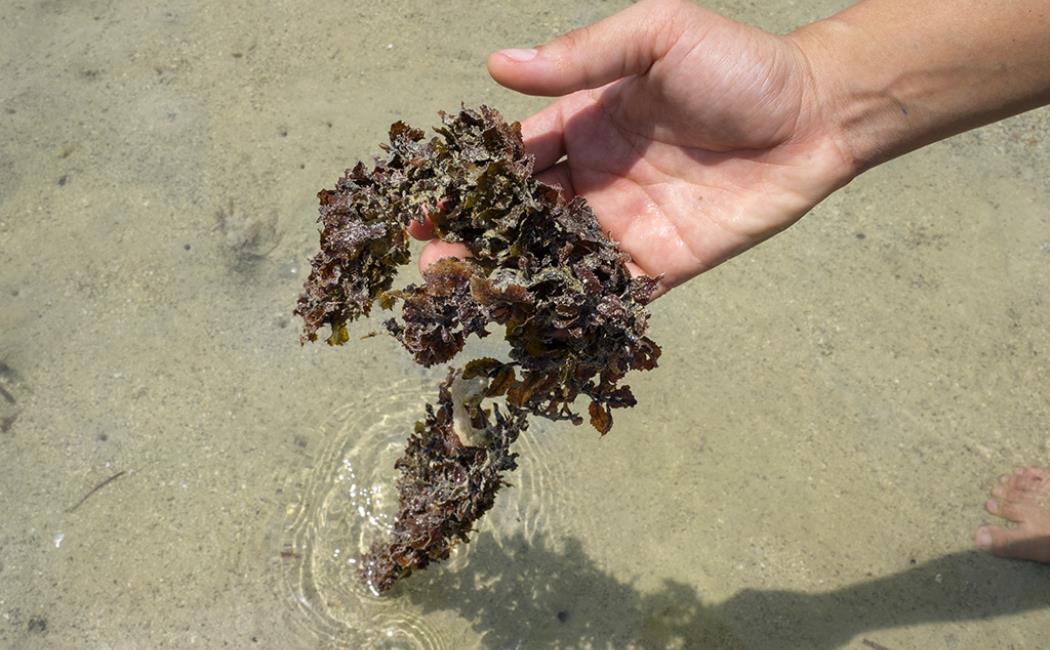
Seaweed sinks deep, taking carbon with it
05 August, 2019
Seaweed may be a quiet achiever when it comes to mitigation of greenhouse gases, with it now shown to travel far and deep beyond coastal areas and thus to play a key role in sequestering carbon from the atmosphere.
Seaweed, or macroalgae, form the most extensive and productive vegetated coastal habitats. They colonize all latitudes and are efficient at capturing atmospheric CO2 and converting it into plant material. An international research team has reported that a diverse range of macroalgae species drifts as much as 5,000 kilometers beyond coastal areas. Around 70 percent of this seaweed, and therefore carbon, will sink to ocean depths below 1,000 meters, meaning that this captured carbon is unlikely to return to the atmosphere.
Click here to read the full story
Image: Macroalgae like this seaweed sequester carbon and can sink to deep depths of the ocean.
© 2019 KAUST